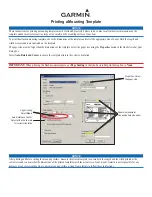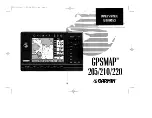
ZS-YN7
2
TABLE OF CONTENTS
1.
SERVICING NOTES
................................................
3
2.
GENERAL
...................................................................
5
3.
DISASSEMBLY
3-1.
Disassembly Flow ...........................................................
7
3-2.
Cabinet Rear Assy ...........................................................
8
3-3.
Cabinet (Upper) ...............................................................
8
3-4.
Shassis Section ................................................................
9
3-5.
CD Block Section ............................................................
9
3-6.
LCD Board ...................................................................... 10
4.
TEST MODE
.............................................................. 11
5.
ELECTRICAL ADJUSTMENTS
TUNER Section ............................................................... 12
CD Section ...................................................................... 14
6.
DIAGRAMS
6-1.
Block Diagram – CD SERVO Section – ........................ 16
6-2.
Block Diagram – TUNER Section – .............................. 17
6-3.
Block Diagram – MAIN Section – ................................. 18
6-4.
Printed Wiring Board – CD Board – .............................. 20
6-5.
Schematic Diagram – CD Board – ................................. 21
6-6.
Printed Wiring Board – TU Board – ............................... 22
6-7.
Schematic Diagram – TU Board – ................................. 23
6-8.
Printed Wiring Board
– MAIN Board (Component Side) – ............................... 24
6-9.
Printed Wiring Board
– MAIN Board (Conductor Side) – ................................. 25
6-10. Schematic Diagram – MAIN Board (1/2) – ................... 26
6-11. Schematic Diagram – MAIN Board (2/2) – ................... 27
6-12. Printed Wiring Boards – KEY Section – ........................ 28
6-13. Printed Wiring Boards – POWER Section – .................. 29
6-14. Schematic Diagram – KEY/POWER Section – ............. 30
7.
EXPLODED VIEWS
7-1.
Cabinet Rear Section ....................................................... 42
7-2.
Cabinet Front Section ...................................................... 43
7-3.
Chassis Section ................................................................ 44
7-4.
LID CD Section ............................................................... 45
7-5.
Optical Pick-up Block Section (KSM-213RAP) ............. 46
8.
ELECTRICAL PARTS LIST
................................ 47
Notes on chip component replacement
•
Never reuse a disconnected chip component.
•
Notice that the minus side of a tantalum capacitor may be
damaged by heat.
Flexible Circuit Board Repairing
•
Keep the temperature of the soldering iron around 270 ˚C
during repairing.
•
Do not touch the soldering iron on the same conductor of the
circuit board (within 3 times).
•
Be careful not to apply force on the conductor when soldering
or unsoldering.
SAFETY-RELATED COMPONENT WARNING!!
COMPONENTS IDENTIFIED BY MARK
0
OR DOTTED LINE
WITH MARK
0
ON THE SCHEMATIC DIAGRAMS AND IN
THE PARTS LIST ARE CRITICAL TO SAFE OPERATION.
REPLACE THESE COMPONENTS WITH SONY PARTS WHOSE
PART NUMBERS APPEAR AS SHOWN IN THIS MANUAL OR
IN SUPPLEMENTS PUBLISHED BY SONY.
About CD-Rs/CD-RWs
This player can play CD-Rs/CD-RWs
recorded in the CD-DA format*, but
playback capability may vary depending on
the quality of the disc and the condition of
the recording device.
* CD-DA is the abbreviation for Compact
Disc Digital Audio. It is a recording
standard used for Audio CDs.
CAUTION
Use of controls or adjustments or performance of procedures
other than those specified herein may result in hazardous radiation
exposure.
SAFETY CHECK-OUT
After correcting the original service problem, perform the following
safety check before releasing the set to the customer:
Check the antenna terminals, metal trim, “metallized” knobs, screws,
and all other exposed metal parts for AC leakage.
Check leakage as described below.
LEAKAGE TEST
The AC leakage from any exposed metal part to earth ground and
from all exposed metal parts to any exposed metal part having a
return to chassis, must not exceed 0.5 mA (500 microamperes.).
Leakage current can be measured by any one of three methods.
1. A commercial leakage tester, such as the Simpson 229 or RCA
WT-540A. Follow the manufacturers’ instructions to use these
instruments.
2. A battery-operated AC milliammeter. The Data Precision 245
digital multimeter is suitable for this job.
3. Measuring the voltage drop across a resistor by means of a
VOM or battery-operated AC voltmeter. The “limit” indication
is 0.75 V, so analog meters must have an accurate low-voltage
scale. The Simpson 250 and Sanwa SH-63Trd are examples
of a passive VOM that is suitable. Nearly all battery operated
digital multimeters that have a 2 V AC range are suitable. (See
Fig. A)
Fig. A.
Using an AC voltmeter to check AC leakage.
1.5 k
Ω
0.15
µ
F
AC
voltmeter
(0.75 V)
To Exposed Metal
Parts on Set
Earth Ground
ATTENTION AU COMPOSANT AYANT RAPPORT
À LA SÉCURITÉ!
LES COMPOSANTS IDENTIFIÉS PAR UNE MARQUE
0
SUR
LES DIAGRAMMES SCHÉMATIQUES ET LA LISTE DES
PIÈCES SONT CRITIQUES POUR LA SÉCURITÉ DE
FONCTIONNEMENT. NE REMPLACER CES COM- POSANTS
QUE PAR DES PIÈCES SONY DONT LES NUMÉROS SONT
DONNÉS DANS CE MANUEL OU DANS LES SUPPLÉMENTS
PUBLIÉS PAR SONY.



































